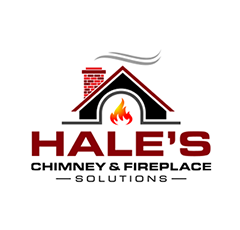When it comes to your chimney system, knowing all the parts of your chimney and their purpose can help you better understand how your chimney works, as well as how to avoid creating hazardous situations. At Hale’s Chimney & Repair, we believe knowledge is power. That’s why we want to break down the anatomy of your chimney and let you know the purpose of each component.
- Chimney Crown – The chimney crown is located at the top of your chimney. Constructed from cement, the crown is designed to protect your chimney masonry from moisture issues caused by rain and snow.
- Chimney Cap – The chimney cap is a metal structure attached to the chimney crown. It is designed to prevent rain, debris, and animals from entering inside your chimney while still letting smoke and warm air out.
- Chimney Flue – The chimney flue is the main passageway in which smoke, hot air, and gas created in the fireplace is expelled up and out of your home.
- Chimney Liner – The chimney liner acts as a barrier between the chimney flue and the chimney masonry. The liner is usually made of clay or ceramic in wood-burning fireplaces, but can also be made of metal. This liner is an important safety feature as it greatly reduces the heat transfer from the flue to the chimney masonry and your home’s wooden framework.
- Chimney Damper – The chimney damper is a set of doors in your chimney which can be closed when the fireplace is not in use and opened when airflow is needed. The damper can usually be located either right above the firebox or near the chimney crown if it is a Lock-Top damper. It is opened and closed using a pulley system. Closing your damper prevents air from escaping your home when the fireplace is not in use as well as prevents rain and snow from entering the home. Opening the damper will allow smoke and gas to leave your home when your fireplace is in use.
- Smoke Shelf – The smoke shelf is located right above the fireplace and damper. The smoke shelf catches falling debris and water before it has a chance to fall into your fireplace. It also helps transfer large amounts of smoke into the smaller flue area.
- Smoke Chamber – The smoke chamber is located just above the smoke shelf. Its job is to gradually funnel and compress larger amounts of smoke and gas into a smaller area. This is done by constructing a smoke chamber wall that gradually slopes toward the chimney flue.
If constructed properly, your chimney should allow smoke and gases to quickly and easily flow from your fireplace to outside your home. However, clogs, cracking, creosote build up, and other maintenance issues will eventually develop in any chimney. If it’s time for your annual chimney inspection, remember to have your chimney inspected by a Chimney Safety Institute of America (CSIA) certified chimney sweep by calling Hale’s Chimney & Fireplace Solutions at 972-562-6851 or scheduling an appointment online today!
